
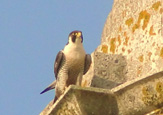
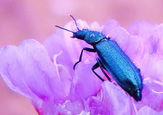
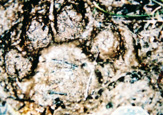
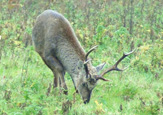
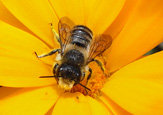
My Big Cat Research - Page 3 of 5
I can only presume then, that they are eating lots of rabbits, foxes and pigeons and game birds. These animals are small and the cat may not even leave any remains, cracking up all the bones and skull. I have found the femur of a fox in one scat and whiskers in two others, plus countless rabbit rat and fox hair in many other scats. When I find a cat scat with deer hair in it, it would seem that there is no other kind of hair in it most of the time. Some places very often contain scats. I can pick several areas of which I know that every visit will produce one or two scats. If I have not been there for a month or two I will find several some of which will be decayed with just the fur and bone content slowly sinking into the ground, or given a helping hand by dung beetles such as the minotaur beetle and dor beetles which inhabit the heathland and usually use the dung of rabbits and deer, but along with another species adapted to the dung of carnivores make short work of the largest deposits.
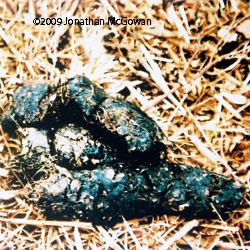 It is by finding these amounts of scats I can only conclude that these areas are territorial boundaries and can be any where, not just the kinds of areas that to me would make a typical boundary. So roads, rivers, areas of certain forest or linear features are of little significance to big cats. There are some linear features though but this could just be coincidence. In these areas, they can deposit scats either in the same exact spot, or be spread out over fifty or a hundred yards or so. Some are buried in little mounds.
It is by finding these amounts of scats I can only conclude that these areas are territorial boundaries and can be any where, not just the kinds of areas that to me would make a typical boundary. So roads, rivers, areas of certain forest or linear features are of little significance to big cats. There are some linear features though but this could just be coincidence. In these areas, they can deposit scats either in the same exact spot, or be spread out over fifty or a hundred yards or so. Some are buried in little mounds.
Along tracks, I sometimes find a mound of earth or leaves or grass, that smells typically of cat scat (and it is a strong poohy smell) and on opening it up, will be a deposit. I do not find these often. Sometimes they just have urine on them, or nothing at all. I also find spray areas and when I do, often many bushes in the area are sprayed stinking the whole wood out. I have collected much faecal matter and hair from bramble or barb wire fences, and now have nearly a hundred samples, most of which comes from my study areas.
I have a lot of experience with mammal hair and bird feathers as one of my hobbies is taxidermy. Many types can be identified by sight alone. All mammals have a unique structure to each hair and under a microscope one can easily ascertain which group of animals it belongs to.
One can then eliminate certain types of mammals. Cat hair can look like dog hair and is perhaps closest looking. As I stated earlier I am positive that we have those three species, but we may also have Golden cat (Asian and African) Jaguar, Ocelot, Jaguarundi, Tiger, (the odd one or two) and Caracal a breeding pair). Fox hair looks very much like lynx hair, but there are other factors which can tell the difference; as much hair as possible needs to be collected, and as many different types of hair from the same individual animal; under hair as well as guard hair, and if possible the lighter in colour the better because black hair blocks out light and the internal structure is hard to see. I have managed though to look at most of my hairs and compared them to genuine leopard, lynx and puma. I have many matches of lynx and leopard with just on or two matches for puma. Other hair is certainly cat of some species, but of which I can not tell.
I had much of my hair looked at by Laura Evens who worked at Bournemouth university in the biological archaeology section. She was surprised to find that some of the hair indeed did seem to resemble the samples of leopard and lynx hair, but she would not to give a definite opinion. She was intrigued though and would like to do more, if only she had the funding.
I have much hair that needs analysing, genetically or otherwise. Having hair genetically analysed costs a lot of money, and contamination is a problem, as well as having hair with roots is vital, the fresher, the better. However I do not feel the need to prove that leopard, lynx and puma are thriving in our countryside, but other scientific bodies do, but they will not fund it, there may be many types of cat around, so genetic testing would be very useful.
The photo shows cat scat containing badger, deer hair and goose feathers.